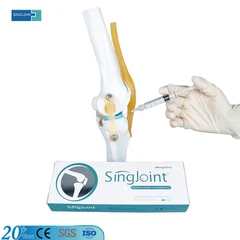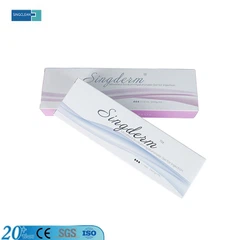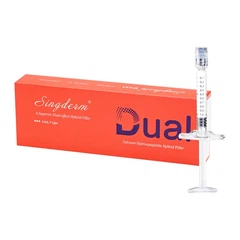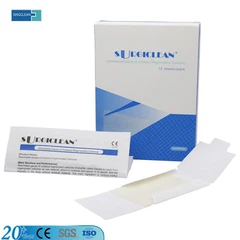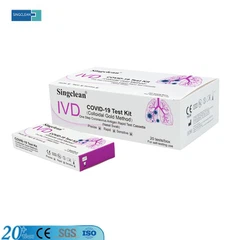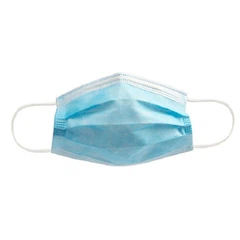What is Abdominopelvic adhesion?
Abdominopelvic adhesion is the adhesion phenomenon between the organs in the abdominal cavity and pelvic cavity caused by various reasons. These organs can include the uterus, fallopian tubes, ovaries, rectum, bladder, etc. Abdominopelvic adhesions are usually caused by inflammation, surgery, trauma, radiation therapy, endometriosis and other reasons.

The formation process of abdominopelvic adhesions can be briefly described as follows:
Inflammation: When the organs in the abdominal and pelvic cavity are affected by infection or inflammation, the body will produce an inflammatory response, leading to swelling and fibrosis of surrounding tissues, and eventually the formation of adhesions.
Surgery: Surgery on the abdomen or pelvis may cause tissue damage, and scar tissue may form and adhere to surrounding organs during the healing process after surgery.
Trauma: Trauma such as an impact or stab wound to the abdomen may also cause damage to the abdominal and pelvic organs and cause adhesions.
Endometriosis: Endometriosis is a common gynecological condition in which endometrial tissue grows outside the uterus and may form adhesions within the abdominal and pelvic cavity.

What harms may it causes?
Abdominopelvic adhesions caused by these factors may cause harm to the body in many ways, including but not limited to the following:
Pain: Adhesion can cause organs to stick together, limiting their normal movement and function, and may cause pain in the abdomen or pelvis, which may be persistent or recurrent.
Infertility: For women, abdominal pelvic adhesion may affect the normal function of the uterus, fallopian tubes, ovaries and other reproductive organs, resulting in infertility or increased difficulty in pregnancy.
Digestive problems: Adhesions may affect the normal movement and function of the digestive organs, leading to digestive problems such as indigestion, gastrointestinal dysfunction, and bloating.
Urination problems: Abdominal and pelvic adhesions may affect the position and function of the bladder, resulting in frequent urination, urgency, and incontinence.
Sexual dysfunction: Abdominal pelvic adhesion may also affect the nerves and blood vessels in the pelvic cavity, which in turn affects sexual function, including problems such as decreased libido and painful intercourse.
Surgical difficulties: For patients who require pelvic or abdominal surgery, the presence of abdominal pelvic adhesions may increase the difficulty and risk of surgery.
What's the solution for anti adhesion?
Methods to prevent abdominal and pelvic adhesion include the following aspects:
Pay attention to post-operative care: For patients who need abdominal or pelvic surgery, proper post-operative care is very important. This includes following the doctor's instructions for proper rest and activity, avoiding strenuous exercise, and keeping incisions or wounds clean and dry to reduce the occurrence of infection and inflammation.
Surgical techniques: When performing abdominal or pelvic surgery, there are techniques your doctor can use to reduce the occurrence of adhesions. For example, minimize tissue damage, avoid overhandling organs, and use bioabsorbent sutures.
Control inflammation and infection: Treat any conditions that may be causing inflammation or infection promptly, including dealing with pelvic inflammation early and following your doctor's recommendations for antibiotic treatment.
Use hyaluronic acid anti-adhesion gel: During surgery, the doctor may use special anti-adhesive agents, such as bioabsorbent patches or gels, to cover the surgical area and reduce friction and adhesion between tissues.

Click to know more about Singclean anti-adhesion gel
For hyaluronic acid anti-adhesion gel, I'd like to introduce Singclean medical sodium hyaluronate anti-adhesion gel for you. It is indicated for helping to prevent or reduce postoperative adhesions after abdominal and pelvic surgery. It is a new type of anti-adhesion polymer material with high molecular weight, fully diffuses and distributes in the entire cavity due to its fluidity and adhesion, forming a spatial sieve-like network structure, and its degradation cycle is consistent with the adhesion formation process to provide complete coverage during the critical period of peritoneal healing. With the advantages of safe, no immunogen, excellent biocompatibility and good anti-adhesion effects. We also have CE, ISO and other certifications for this product.
For more information, please feel free to contact marketing@hzxhe.com.

